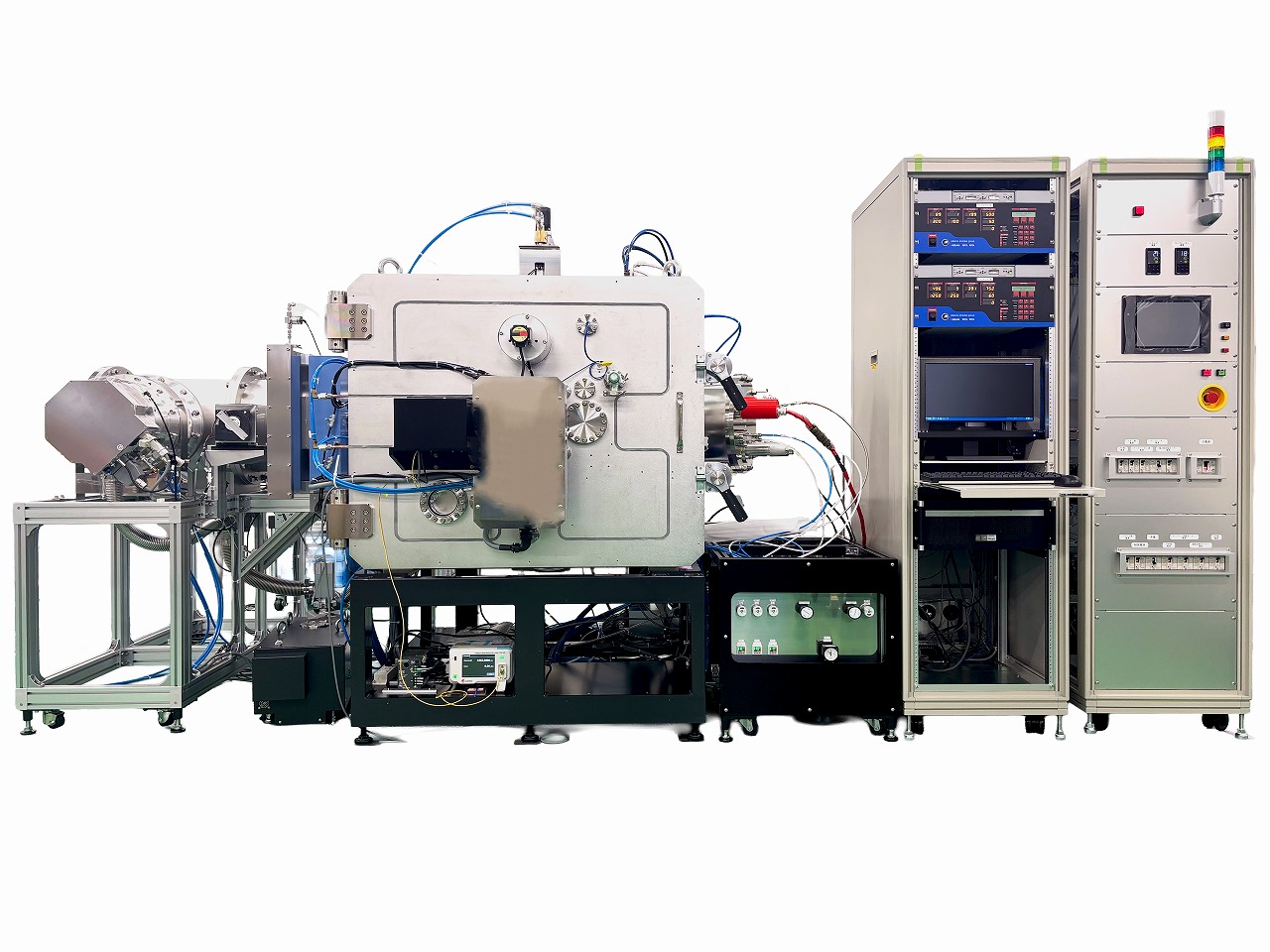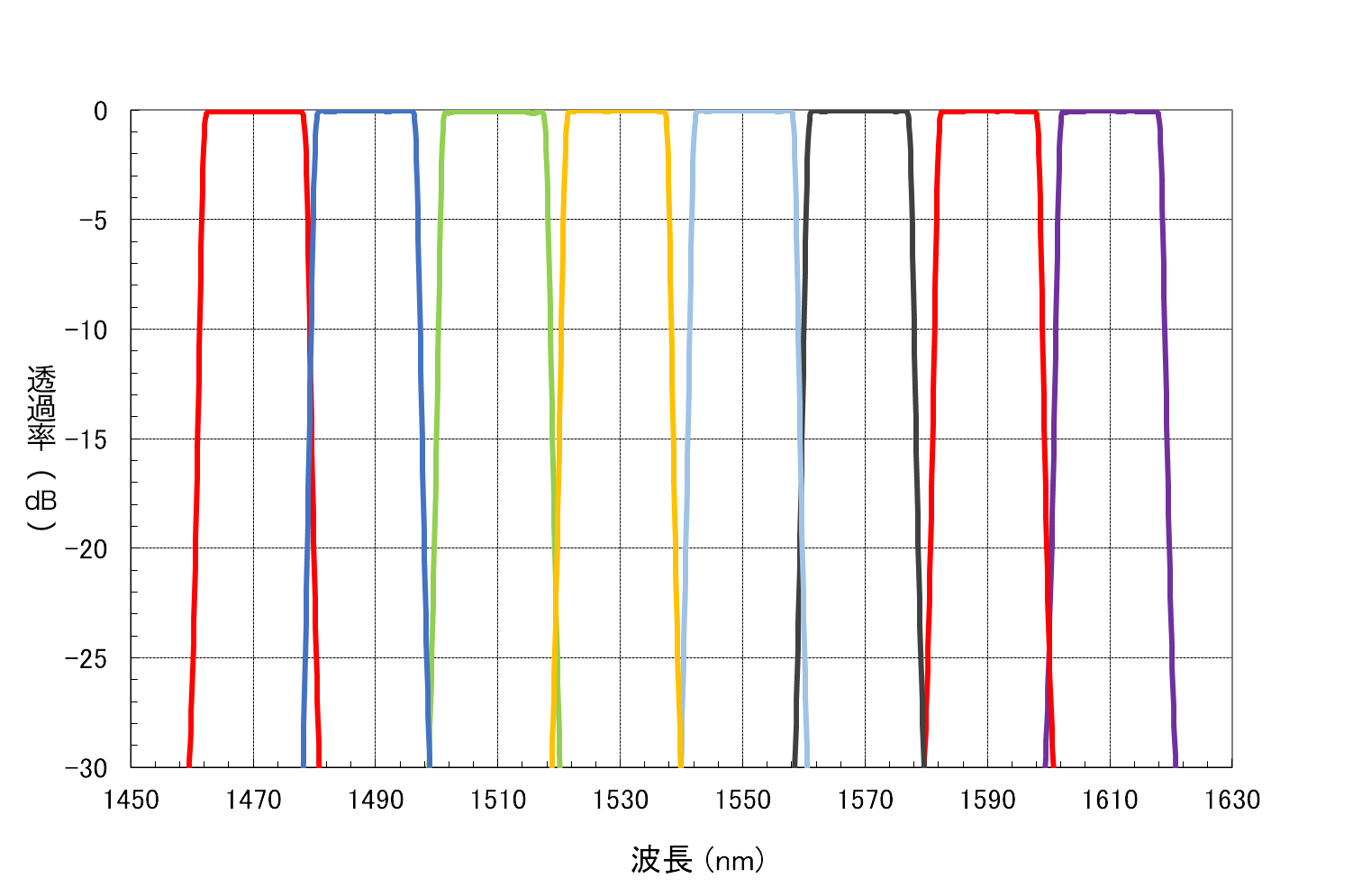IBS (Ion Beam Sputtering) System

Outline of IBS (Ion Beam Sputtering) System
1-1 Principle of IBS
deposited as a thin film on the substrate facing the target. By changing the type of target material, various types and structures of thin films containing compounds can be produced. Also, since the ion beam can be controlled precisely with on / off, fine control of film thickness, surface flatness and multi-layer film formation etc. are possible. In addition, the surface condition is controlled by the assisting ion beam (see Fig. 1).

Fig.1. Principle of IBS
1-2 Application Example of IBS(Optical Filter for OpticalCommunication)
For high-speed and large-capacity optical communication, WDM (wavelength division multiplex) communication is normally used where individual optical signals are transmitted at the same time with different wavelengths. The role of optical filters that can divide clearly these WDM signals into different port is important. Fig. 2 shows the transmission performance of an optical filter created by IBS. We can see a very clear separation between the wavelengths of CWDM (coarse WDM)) signals.

Fig. 2. Transmission characteristics of an optical filter created by IBS.
Fig. 3 shows the characteristics of a Gain Flattening Filter created by IBS. This is an optical device that guarantees that all wavelengths are restored to the same intensity. Device characteristics (blue line) is closely coincident with that of the target value (red line).

Fig. 3. Characteristics of a gain flattening filter created by IBS.
